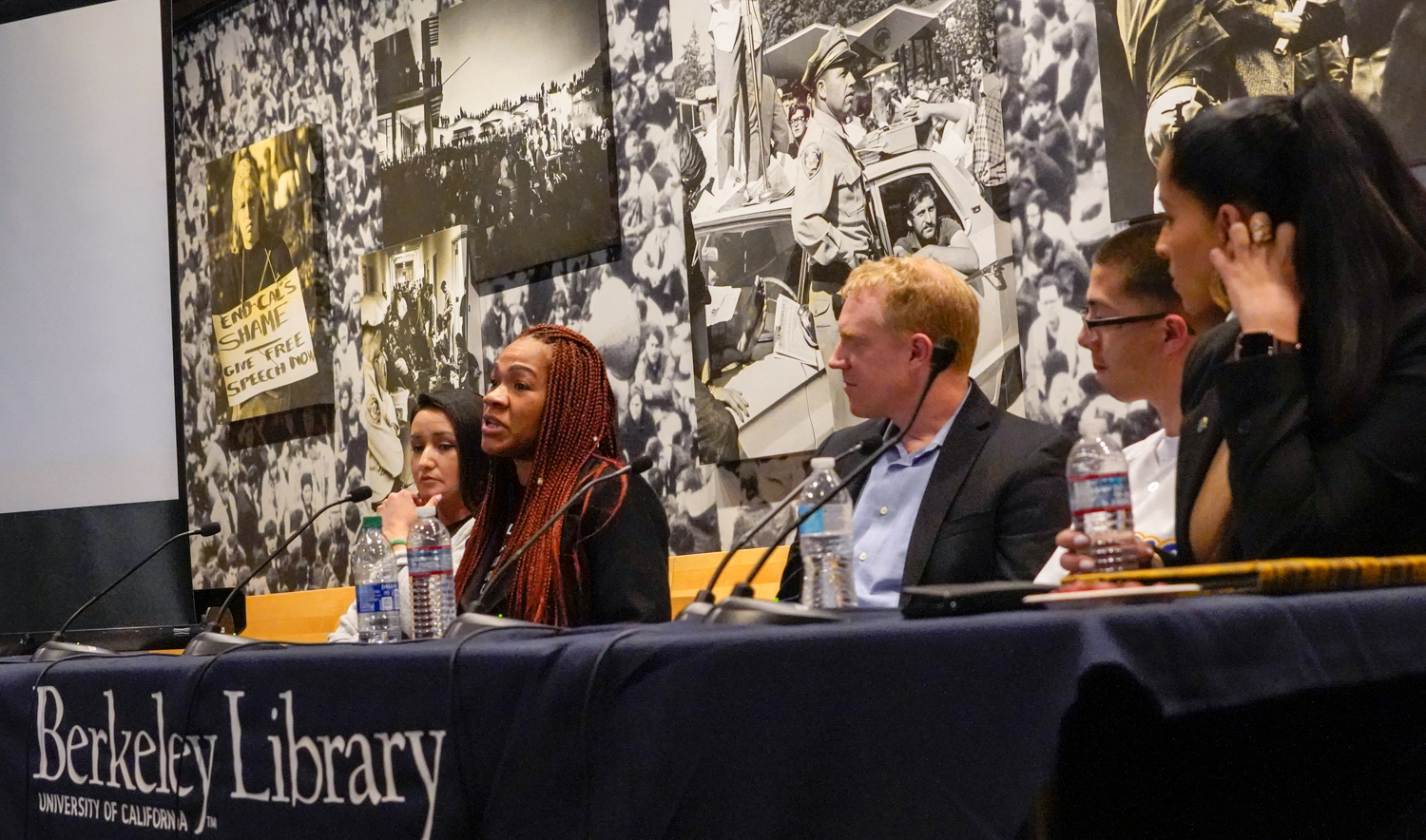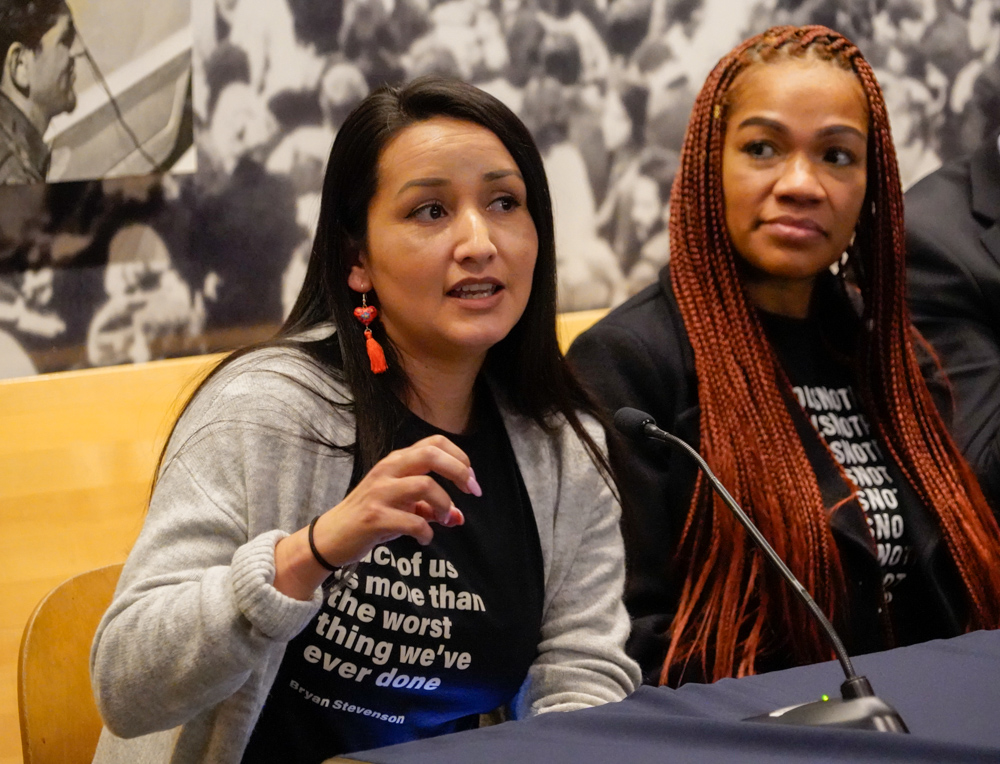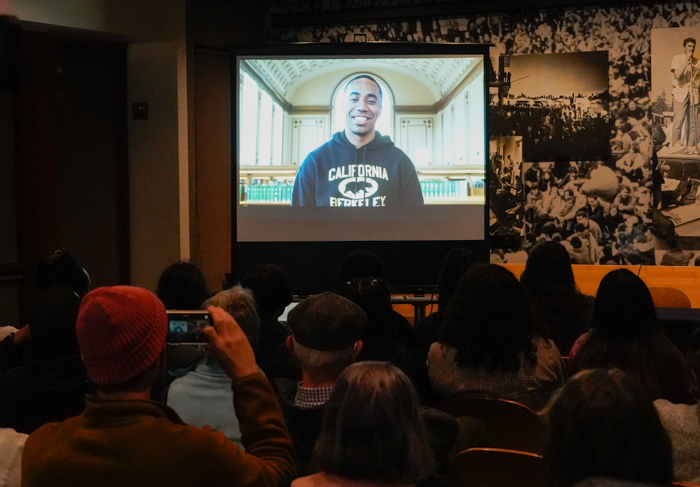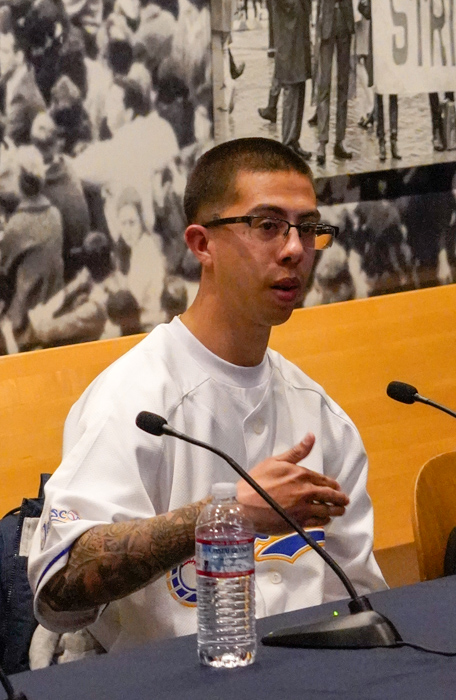
Berkeley Underground Scholars is more than a program: In the words of director Azadeh Zohrabi, “This is a movement.”
On Tuesday evening, a standing-room-only crowd of more than 50 people crammed into Moffitt Library’s Free Speech Movement Café for a screening of From Incarceration to Education (with remarks by filmmaker Skylar Economy) and a panel discussion featuring Daniela Medina, Leneka Pendergrass, and Jessi Fernandez, formerly incarcerated students with the Berkeley Underground Scholars program, along with Berkeley sociology professor David Harding.
At once inspiring, poignant, and eye-opening, the event — presented by the Library’s Free Speech Movement Café Educational Programs Committee — addressed the challenges of reversing the school-to-prison pipeline, and provided firsthand accounts from students who have made that leap, and who are working to make it easier for others to do the same.
Here are five things we learned.

1. The Berkeley Underground Scholars is a movement — and it’s growing.
The Berkeley Underground Scholars Initiative started as a small group of students around 2012. Together, they developed programs to help students like themselves: a cross-enrollment program, where community college students who are formerly incarcerated or who have been affected by a loved one’s incarceration could take classes at UC Berkeley, and a transfer program, supporting community college students applying to Berkeley.
A few years in, with funding from the state, the Berkeley Underground Scholars program was launched.
But it didn’t stop there.
UCLA became the first school to adopt the Underground Scholars Initiative model — and the model has since been adopted all over the state. Formerly incarcerated students at UC Riverside, UC Irvine, UC Santa Barbara, UC Santa Cruz, UC San Diego, and UC Davis are starting Underground Scholars Initiative chapters on their respective campuses. And the Regents are on the verge of providing funding statewide. If the budget is approved, Berkeley Underground Scholars director Azadeh Zohrabi said, “by the end of this year, early next year, we could have full programs of underground scholars at every UC campus serving all of the state of California.
“We’re really excited about what that means for our ability to work with more community college students and reach deeper inside the prisons,” she said.

2. Research on formerly incarcerated college students is scant.
There’s a dearth of research on formerly incarcerated college students, David Harding, the sociology professor on the panel, said.
But we do know a few things. Most formerly incarcerated students are at community colleges. (“Not everyone makes it to a place like Berkeley,” he said.) And over a quarter of people who are released from prison before the age of 25 end up going to college at some point, he said.
Harding is working with formerly incarcerated students to contribute to the body of research around the issue. Instead of using the traditional model, with the professor assigning topics for research projects, Harding has students drive the research questions, encouraging them to draw on their own experiences — for example, by studying the prospect of finding employment for people with criminal records.
3. Here’s how we could smooth the pathway to college.
Harding points to a few ways to help open doors to people who were formerly incarcerated who want to go to college.
Programs such as Berkeley Underground Scholars provide crucial support for formerly incarcerated students. Plus, he said, college needs to be more affordable — not just tuition, but also other costs associated with getting an education.
Also, making institutional pathways to college more seamless would ease the transition from incarceration to education. Under this “continuation of education” model, someone taking classes while incarcerated could more easily enter college once released, Harding said.

4. There can be a whole lot of challenges for formerly incarcerated students.
Even after making it to Berkeley, formerly incarcerated students are still confronted with challenges, stereotypes, and probing questions they’d just as soon avoid.
Triggers can come in a lot of forms, whether it’s an insensitive comment about felons or a question about the meaning behind a tattoo. Group discussions in the classroom can cause discomfort, and questions about a formerly incarcerated student’s past can be difficult to field. (“What were you doing during that World Series?” might sound innocent, but the answer — “I was watching it from my cell” — might be more than a student wishes to share, scholar Daniela Medina said.)
In addition to the internal struggles, there are a raft of external challenges.
“Our students are being profiled and harassed by other students, by faculty, by police,” Zohrabi said. “They are still being asked, ‘Why are you in this building? Who are you? Let me see your ID’ — not just on this campus but on other UC campuses.
“It’s still not fully normal or acceptable to have underground scholars on any UC campus, as much as we celebrate this program.”
The totality of these experiences can make scholars feel unwelcome and serves as a harsh reminder: “These institutions were never equipped for folks like us,” as scholar Jessi Fernandez said.
“We have such a long way to go,” Medina said.
But just by being at Berkeley — by being themselves — formerly incarcerated students can make a difference.
“Your presence is resistance,” Fernandez said.
5. It’s about more than the diploma.
If there’s one thing shared among the scholars on the panel, it’s a clear-eyed sense of purpose.
For the panelists, it’s not just about getting that degree — it’s about helping make the path easier for students like them.
For Leneka Pendergrass, Berkeley Underground Scholars has provided a much-needed support system and has helped her put words to her own experience, allowing her to better help others. (It has also provided her daughter “a secondhand UC Berkeley education,” she said.)
“We’re not doing this for us,” Medina added. “We’re doing it for the people who are coming behind us.”